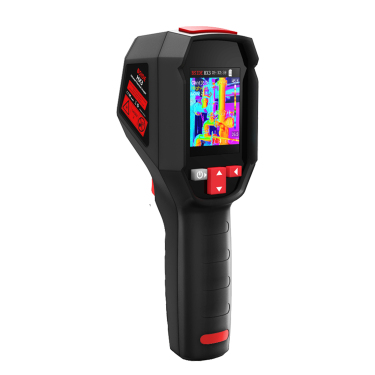
# Infrared Thermometer: A Comprehensive Guide to Non-Contact Temperature Measurement
## Introduction to Infrared Thermometers
Infrared thermometers, also known as IR thermometers or laser thermometers, are innovative devices that measure temperature without physical contact. These tools have revolutionized temperature measurement across various industries by providing quick, accurate, and safe readings from a distance.
## How Infrared Thermometers Work
The Science Behind Non-Contact Temperature Measurement
Infrared thermometers operate on the principle that all objects emit infrared energy as a function of their temperature. The device contains a lens that focuses infrared light from an object onto a detector called a thermopile. The thermopile converts the infrared energy into an electrical signal, which is then displayed as a temperature reading.
Key Components of an IR Thermometer
- Optics system (lens)
- Infrared detector (thermopile)
- Signal processing unit
- Display screen
- Laser pointer (for aiming in some models)
## Advantages of Using Infrared Thermometers
Why Choose Non-Contact Temperature Measurement?
Infrared thermometers offer numerous benefits that make them superior to traditional contact thermometers in many applications:
- Safety: Measure hazardous or hard-to-reach surfaces without risk
- Speed: Get instant readings (typically in less than one second)
- Hygiene: No cross-contamination between measurement points
- Versatility: Suitable for moving objects or electrical components
- Durability: No fragile probes that can break with repeated use
## Common Applications of Infrared Thermometers
Where Are IR Thermometers Used?
The non-contact nature of infrared thermometers makes them invaluable in numerous fields:
| Industry | Application |
|---|---|
| Healthcare | Measuring human body temperature (especially during pandemics) |
| Food Service | Checking food temperatures without contamination |
| HVAC | Diagnosing heating and cooling system performance |
| Automotive | Identifying overheating components |
| Manufacturing | Quality control and process monitoring |
## Choosing the Right Infrared Thermometer
Key Factors to Consider
When selecting an infrared thermometer, consider these important specifications:
- Temperature Range: Ensure it covers your required measurement range
- Distance-to-Spot Ratio: Determines how close you need to be for accurate readings
- Emissivity Settings: Important for measuring different surface types
- Response Time: How quickly the device provides a reading
- Additional Features: Data logging, alarms, or connectivity options
## Proper Use and Maintenance
Getting Accurate Readings
To ensure optimal performance from your infrared thermometer:
- Keep the lens clean and free from scratches
- Allow the device to acclimate to new temperature environments
- Understand the emissivity of the surfaces you’re measuring
- Maintain proper distance according to the D:S ratio
- Store in
Keyword: infrared thermometer